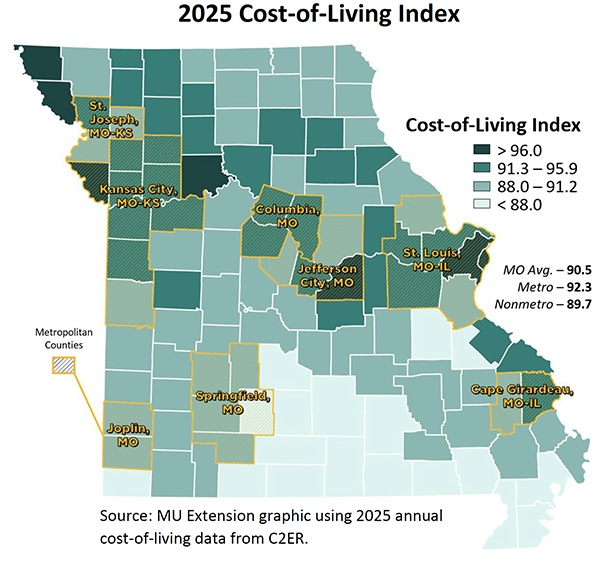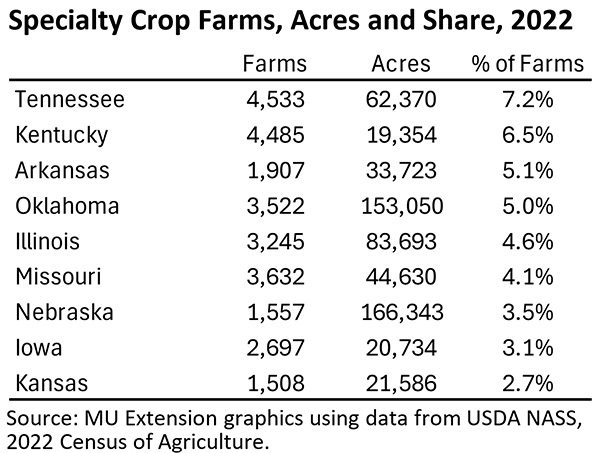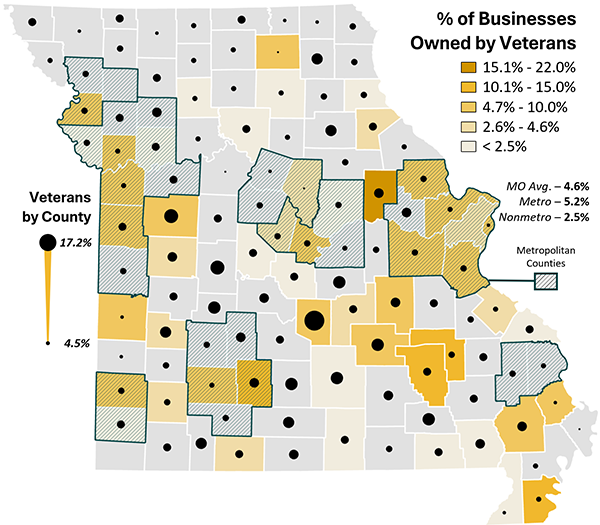Recent issues
Vol. 6, Issue 14: Cost-of-Living and Inflation – November 17, 2025 (PDF)

Missourians benefit from a lower cost of living that is typically 90% of the national average, which is also reflected in comparatively lower wage levels. Living costs are higher in Missouri’s metros (92.3) compared to nonmetro areas (89.7). Southern Missouri counties had the lowest cost of living in 2025.
Vol. 6, Issue 13: Specialty Crop Farming – Oct. 27, 2025 (PDF)

Specialty crops — such as fruits, nuts, berries, vegetables, potatoes, nursery and greenhouse products, and Christmas trees — are a diverse part of Missouri’s agricultural economy. In 2022, Missouri had 44,630 acres planted in specialty crops across 3,632 farms (4.1% of all MO farms). Among its neighboring states, Missouri stands out in elderberry, grape and peach production, with the most acres in active production and bearing fruit.
Vol. 6, Issue 12: Veteran-Owned Businesses – Oct. 6, 2025 (PDF)

In 2022, the Small Business Administration (SBA) reported that veterans, roughly 4.4% of the labor force, were the majority owners of over 1.6 million firms across the United States: nearly 5.5% of all U.S. businesses. Missouri veterans represent 7% of the state’s population aged 18 and over, compared to 5.9% for the U.S. Veterans made up 10% or more of the population in nearly 22 Missouri counties. Missouri outpaces the national average in both revenue going to veteran-owned businesses and in the proportion of businesses that are veteran-owned.